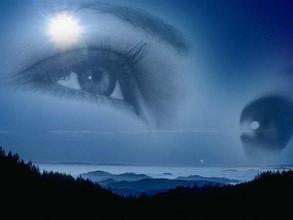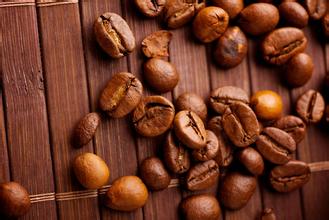Introduction of Starbucks Uganda Coffee Bean Flavor description Grinding scale method
Introduction of Starbucks Uganda Coffee Bean Flavor description Grinding scale method
Uganda is a landlocked country in eastern Africa, straddling the equator, bordering Kenya to the east, Tanzania and Rwanda to the south, the Democratic Republic of the Congo to the west and Sudan to the north. Most of the territory is located in the Central African Plateau, many lakes, with an average elevation of 1000,000,1200 meters above sea level. There are many lakes and plateaus in the mountains, which are known as "plateau water villages". The western branch of the East African Rift Valley runs through the western border, with many rivers and lakes at the bottom of the valley. Uganda has a great Victoria lake, coupled with the high mountains, which makes Uganda a mild climate suitable for growing coffee, although it spans both sides of the equator.
The coffee growing industry in Uganda is one of the pillar industries of its exports. Uganda is the birthplace of Robsta in Africa, just as Ethiopia is the origin of Arabica coffee, while Robster coffee was first discovered in Uganda. So far, Uganda has a history of growing coffee for more than 100 years. The output ranks second in Africa, after Ethiopia. At the same time, Uganda is one of the few major countries in Africa dedicated to the production of organic coffee. In Uganda (Uganda), Arabica coffee beans account for only 15% of the country's total coffee production. Uganda's best coffee is mainly produced in the mountains of Elgon and Bugisu along the Kenyan border in the northeast and Ruwensori in the west.
Ugandan coffee beans have a unique flavor of delicate flavor, which is very suitable for making Italian and other flavors of coffee. More importantly, Ugandan coffee beans are strictly screened according to the standards of the international market to ensure their high quality and pollution-free characteristics.
Starbucks coffee NO.8 mocha Caff è Mocha
This coffee is made of mellow mocha sauce, espresso and steamed milk, topped with whipped cream. In cold days and sad times, no one can resist her temptation.
Hundreds of years ago, the port of Mocha in Yemen was famous as an important coffee trade center, and one of the most popular chocolate-flavored coffee beans exported from it was also known as "mocha."
Starbucks coffee NO.5 espresso Espresso
This is the essence of coffee, shown in the most concentrated way. Starbucks espresso is rich with a touch of caramel.
One ounce of espresso is also called single, while two ounces of espresso is called double Starbucks NO.4 latte Caff è Latte
This is a traditional classic drink-espresso mixed with hot milk and covered with a light layer of foam. When tasting this coffee, you can choose to add syrup with a special flavor (such as vanilla, caramel or almond).
What is a latte? Latte is the transliteration of Italian "Latte", which means milk. And what we call a latte is milk coffee. The bottom is espresso, the middle is milk heated to 65-75 ℃, and finally a layer of cold milk foam no more than half a centimeter.

Important Notice :
前街咖啡 FrontStreet Coffee has moved to new addredd:
FrontStreet Coffee Address: 315,Donghua East Road,GuangZhou
Tel:020 38364473
- Prev

Description of washing Flavor of Yejia Coffee Cochel Coffee beans
Yejia Coffee Cochel Coffee Bean washing Flavor describes the taste of the manor region Yega Snow has always been famous in the eyes of coffee connoisseurs all over the world. Rare washed high-quality Elaraby plus coffee is suitable for all degrees of roasting, showing a fresh and bright aroma of flowers and fruits, beautiful and complete bean shape, is a general mocha incomparable high-grade coffee. This kind of coffee has a unique aroma
- Next

Costa Rican Tarazhu Coffee Bean Flavor description Grinding scale Variety production area introduction
Costa Rica Tarazu Coffee Bean Flavor description Grinding scale Variety production area introduction Costa Rica mostly uses water washing treatment, in recent years there has also been an alternative half-sun treatment (Miel) or (Honey Coffee), which can be translated as sweet as honey treatment. The coffee that Costa Rica boasts is as sweet as honey, but it is quite eye-catching when it is Honey Coffee on the sacks. It changes
Related
- Detailed explanation of Jadeite planting Land in Panamanian Jadeite Manor introduction to the grading system of Jadeite competitive bidding, Red bid, Green bid and Rose Summer
- Story of Coffee planting in Brenka region of Costa Rica Stonehenge Manor anaerobic heavy honey treatment of flavor mouth
- What's on the barrel of Blue Mountain Coffee beans?
- Can American coffee also pull flowers? How to use hot American style to pull out a good-looking pattern?
- Can you make a cold extract with coffee beans? What is the right proportion for cold-extracted coffee formula?
- Indonesian PWN Gold Mandrine Coffee Origin Features Flavor How to Chong? Mandolin coffee is American.
- A brief introduction to the flavor characteristics of Brazilian yellow bourbon coffee beans
- What is the effect of different water quality on the flavor of cold-extracted coffee? What kind of water is best for brewing coffee?
- Why do you think of Rose Summer whenever you mention Panamanian coffee?
- Introduction to the characteristics of authentic blue mountain coffee bean producing areas? What is the CIB Coffee Authority in Jamaica?

